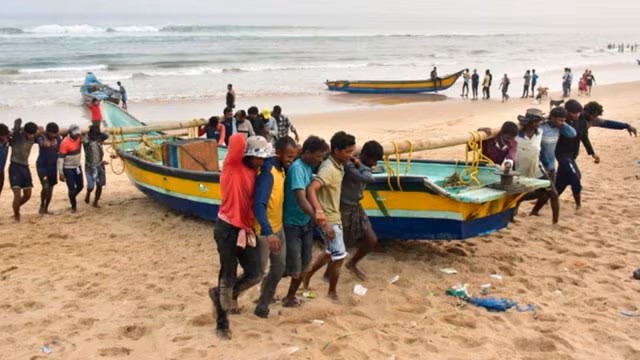The India Meteorological Department (IMD) has issued a warning regarding Cyclone Dana, which is expected to bring heavy rainfall and strong winds to several parts of Tripura. As the cyclone approaches, officials have heightened their vigilance, particularly for the districts of West Tripura and Sepahijala, which are likely to bear the brunt of the adverse weather conditions.
Cyclone Dana: Formation and Path
Cyclone Dana formed over the Bay of Bengal and has been categorized as a severe cyclonic storm. The IMD reported that the cyclone has gained strength as it moves northward, impacting coastal regions of eastern India. Forecasts indicate that Dana is likely to make landfall near the Odisha coast before moving towards the northeastern states, including Tripura. The cyclone’s trajectory suggests that it could bring substantial rainfall, especially to the hilly and low-lying areas of the state.
Meteorological experts have projected that the cyclone could reach Tripura by the weekend, with the potential for heavy rains starting as early as Friday. Wind speeds are expected to reach up to 60-70 km/h, which could lead to dangerous conditions for residents, particularly in vulnerable areas.
Preparedness Measures by Authorities
In response to the impending threat posed by Cyclone Dana, the Tripura government has initiated several preparatory measures to safeguard lives and property. The state disaster management authority has been on high alert, conducting meetings with district officials to assess readiness. Key measures include:
- Evacuation Plans: Authorities have prepared evacuation plans for communities residing in low-lying areas prone to flooding. Evacuation centers have been identified and equipped to accommodate displaced residents.
- Deployment of Resources: The government has mobilized resources, including emergency response teams and rescue equipment, to ensure swift action in the event of flooding or landslides. Medical teams are also on standby to assist those affected.
- Awareness Campaigns: The government is working closely with local media and community leaders to disseminate information about the cyclone’s potential impacts. Public awareness campaigns are being launched to educate residents on safety protocols and emergency procedures.
- Monitoring Weather Conditions: Continuous monitoring of weather updates from the IMD is crucial. Local officials are encouraged to keep residents informed about changing conditions, ensuring they are prepared for any eventualities.
Impact on Daily Life and Agriculture
The expected heavy rainfall from Cyclone Dana raises concerns not only for public safety but also for agriculture and daily life in Tripura. The state’s economy is heavily reliant on agriculture, and farmers are worried about potential damage to crops. The monsoon season is already critical for paddy cultivation, and excessive rainfall could lead to flooding, harming standing crops and affecting the livelihoods of farmers.
Local farmers have been urged to take preventive measures, such as harvesting mature crops and securing farming equipment. Additionally, the government is closely monitoring the agricultural landscape to assess potential damage and plan for recovery efforts.
The Importance of Community Resilience
The threat posed by Cyclone Dana underscores the need for community resilience in the face of natural disasters. Past experiences with cyclones and heavy rainfall have shown that communities that come together and implement proactive measures fare better during emergencies. Community engagement and preparedness can significantly reduce the impact of disasters.
Local organizations and NGOs are being encouraged to play a role in disaster response efforts. Volunteer groups can assist in disseminating information, providing support in evacuation processes, and helping those in need during and after the storm.
Looking Ahead
As Cyclone Dana approaches Tripura, the focus remains on ensuring the safety and well-being of residents. The state’s proactive measures, combined with community engagement, will be crucial in navigating the challenges posed by the cyclone. Meteorological officials continue to monitor the situation closely, providing regular updates to keep the public informed.
The IMD has urged residents to remain vigilant and to heed any advisories issued by local authorities. The combination of heavy rainfall and strong winds can create hazardous conditions, making it essential for everyone to prioritize safety.
In addition, while Cyclone Dana presents a formidable challenge for Tripura, the readiness of government authorities and the resilience of local communities can mitigate its impacts. Continuous monitoring, effective communication, and collective action are vital components in overcoming the challenges posed by natural disasters, ensuring that lives and livelihoods are protected as the state braces for the storm.




